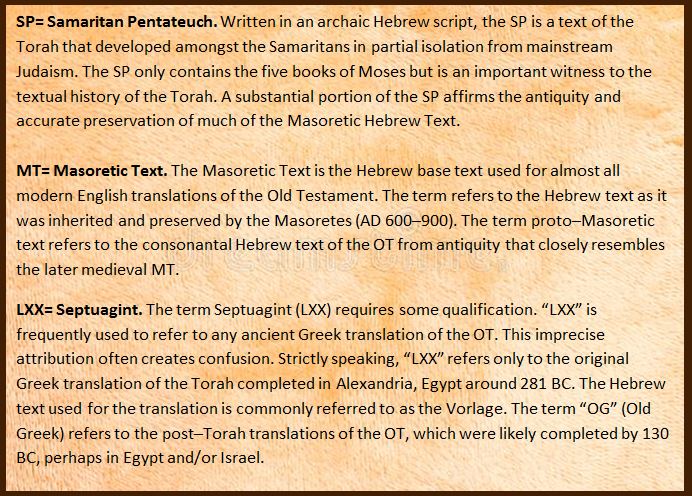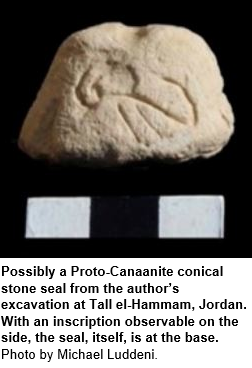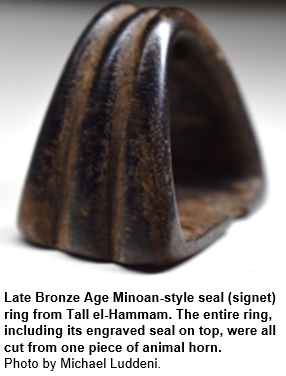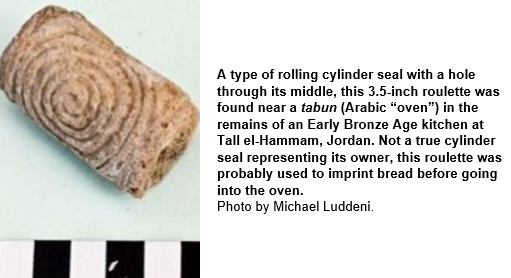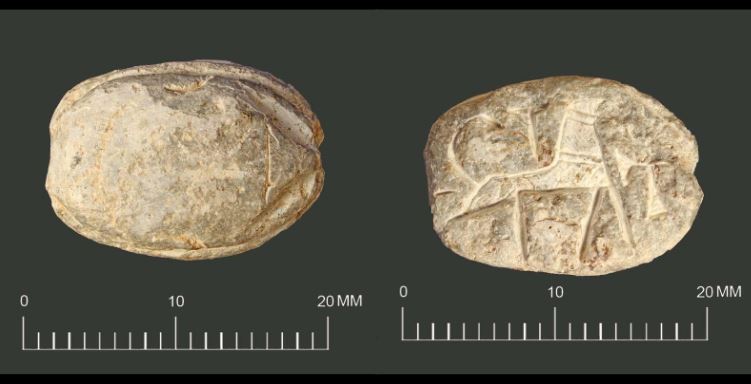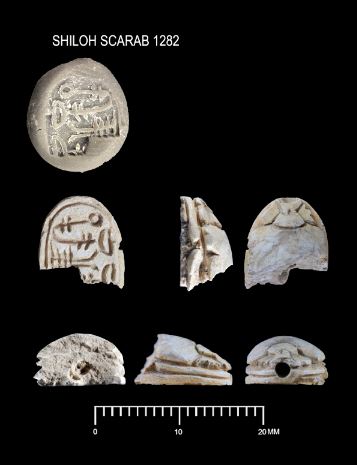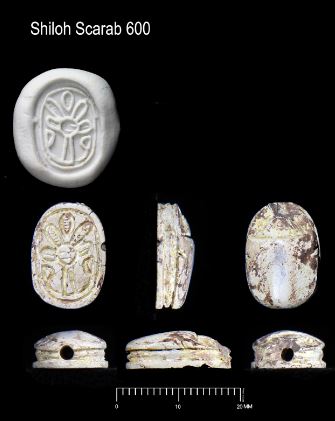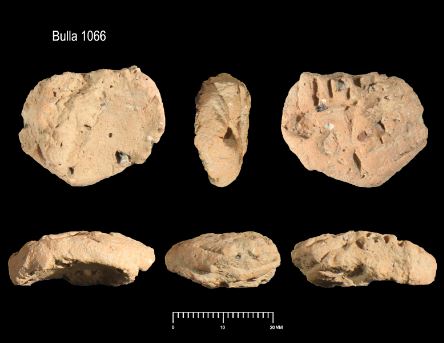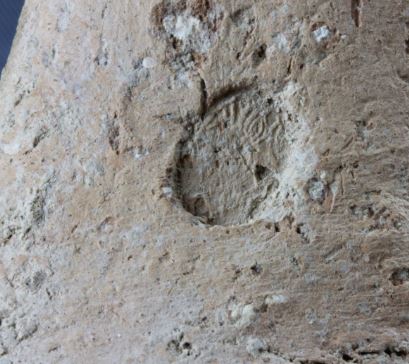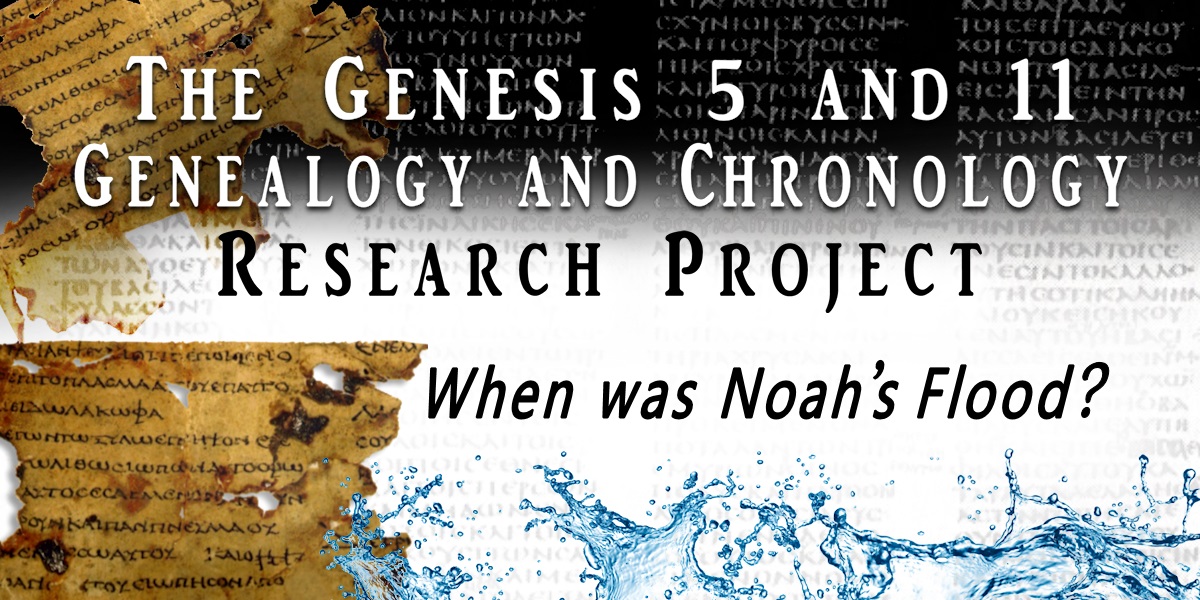
From Adam to Abraham: The Latest on the Genesis 5 and 11 Project
The goal of this article is to provide the reader with a brief update on the Genesis 5 and 11 Research Project. We will describe the current emphases of the research, provide answers to questions we have received about Genesis 5 and 11, and briefly outline plans for the publication of the book, From Adam to Abraham (FATA). The goals, description, and published articles for the Gen 5/11 Project can be found at the end of this article.
1. Recent Areas of Emphasis
Hermeneutics
Can we really claim to hold to the full God breathed nature of Scripture while simultaneously imposing interpretive theories derived from external sources unto Holy Scripture, sources which are ultimately rooted in fallen, man-centered authorities? The ultimate answer to this question is “no.” And yet, a majority of evangelical scholars apply hermeneutical methods to Genesis 1-11 that are foreign to the authority, sufficiency, and clarity of Scripture. In effect, because the Bible itself is not permitted to exert ultimate hermeneutical control over the interpretation of Genesis 1-11, evangelicals interpret texts such as the numbers in Gen 5 and 11 in ways which suit their interpretations of external data, such as the Sumerian King List or other archaeological discoveries from the ancient Near East. These challenges to the authority of Scripture are compounded even further because contemporary “scientific” human and cosmic origin theories are inexorably rooted in philosophical naturalism. This modern, scientific consensus is in direct and irreconcilable conflict with Genesis 1-11. Yet, this philosophical tyranny is largely glossed over by the evangelical community, leading to a plethora of new-found, inventive, and, for the moment, trendy evangelical interpretations of the primeval history.
I recently wrote about this significant and dangerous problem in the brief Fall 2020 Bible and Spade article, “By Whose Authority?” This intro piece will be followed by an extended two-part article, entitled: “Wild West Evangelical Hermeneutics and the Case of the Patriarchal Lifespans.” I encourage the reader to subscribe to Bible and Spade to keep up with our latest thoughts on the subject. Other Bible and Spade articles which deal with hermeneutics and Genesis 1-11 include:
Noel Weeks, “The Hermeneutical Problem of Genesis 1-11,” Themelios 4, no. 1 (September 1978): 12–19. Republished in the Fall 2020 issue of Bible and Spade, and available online.
Todd Beall, “Genesis 1-11: A Plea for Hermeneutical Consistency,” Bible and Spade 29, no. 2–3 (Spring/Summer 2016): 68–75.
Todd Beall, “Evangelicalism, Inerrancy, and Current OT Scholarship,” Bible and Spade 28, no. 1 (Winter 2015): 18–24.
Richard D. Lanser Jr., “The Influence of the Ancient Near East on the Book of Genesis,” Bible and Spade 23, no. 4 (Fall 2010): 95–99.
Thomas Purifoy Jr., “The Gnostic World of John Walton,” Bible and Spade 33, no. 3 (Summer 2020): 18–27.
William VanDoodewaard, “The Lost Word and the Lost World,” Bible and Spade 30, no. 1 (Winter 2017): 21–24.
Readers should feel free to contact me through the ABR website for a list of more resources on hermeneutics and Genesis 1-11.
Kainan (Luke 3:36; Genesis 11:13b-14b)
When I began to delve into the genealogies of Genesis 5/11, I knew that the thorny subject of Kainan would require an in-depth examination and study. After reading dozens of articles and commentaries on the subject, I discovered few satisfactory answers to the textual and interpretive issues vis-à-vis Kainan. Arbitrary solutions, fundamentalist conspiracy theories, theological hand wringing, and superficial text critical analyses permeate the literature.
In two articles, I have put forth the proposal that Kainan was in the original text of Genesis but fell out of Gen 11 by accident early due to scribal error and subsequent internal harmonization. This solution to the Kainan problem has previously been suggested in brief, but with inadequate development. In my judgment, Kainan is original to both Luke 3:36 and the genealogy of Genesis 11:10-32.
1. This article provides an overview of my argument, and includes some hi-resolution manuscript photos:
“New Evidence for Kainan in New Testament and LXX Papyri,” Bible and Spade 31, no. 3 (Summer 2018): 70-77.
2. I co-authored this article with Dr. Kris Udd, which goes into significant detail.
“On the Authenticity of Kainan, Son of Arpachshad.” Detroit Baptist Seminary Journal 24 (2019): 119-154.
Liberal Critical and Other Reconstruction Theories for Gen 5/11
The liberal critical literature is replete with theses about the origin and meaning of the numbers in Genesis 5/11. These theories are usually complex, often highly arbitrary and convoluted, and require careful and extended critique. In a 2015 article, conservative authors Cosner and Carter adopted several reconstruction arguments from the work of liberal critical scholars Ralph Klein and Ronald Hendel in their own attempt to defend the originality of the MT’s primeval timeline.
I have yet to publicly interact with the manifold problems with the Klein/Hendel thesis and Cosner/Carter’s adoption of key aspects thereof. To cite just one crucial example, the C/C reconstruction for the LXX and SP’s numbers in Genesis 5 relies heavily on the claim that an accidental change to Jared’s begetting age from 162 to 62 years triggered a series of deliberate emendations to the numbers (which originally matched the MT) in proto-SP and proto-LXX texts. These subsequent emendations to the proto-SP and LXX were ostensibly made to prevent Jared, Methuselah, and Lamech from living past the Flood. After conducting a detailed analysis of the arguments in both the Klein/Hendel theories and in the C/C pro-MT reconstruction, I discovered that an accidental reduction in Jared’s begetting age from 162 to 62 in an original MT chronology would not have led to any of the patriarchs living past the Flood. Thus, all the alleged changes that C/C claim occurred in the proto-LXX/SP because of this initial, triggering error with Jared’s begetting age were never necessary to begin with. This is just one of many intractable problems with the arguments presented in the 2015 C/C article.
Accompanying the examination of the C/C pro-MT reconstruction theory, including an expansion of my previously published critiques, FATA will contain an analysis and critique of the Klein/Hendel thesis, detailing how it collapses on ten major points. Other liberal critical theories, and those put forth by Jerome, Augustine, and Bede will also be examined in detail.
External Witnesses
An entire chapter of FATA will be dedicated to examining external witnesses to Gen 5/11. A few of these witnesses have been documented in previous articles. Thus far, I have compiled a list of approximately 65 witnesses from 280 BC to ca. AD 800 which document numbers from Gen 5/11 or calculate date(s) for Adam, the Flood, and/or creation. No external witness prior to the 2nd century AD attests to the MT’s complete primeval timeline. Despite the profound influence of Jerome’s Latin Vulgate (containing the MT’s numbers), a majority of external witnesses in both the western and eastern church affirmed the longer primeval chronology as the original given to Moses by God.
The Abram/Terah Matrix: Genesis 11:26-12:4
Genesis 11:26 in the ESV reads: “When Terah had lived 70 years, he fathered Abram, Nahor, and Haran” (literally, “he caused Abram, Nahor, and Haran to be born”). On the surface, the verse appears to be indicating that Terah was 70 years old when Abram was born, since he is named first. Some commentators argue that Terah had triplets at the age of 70.
Conversely, since Terah died at the age of 205 in Haran (MT/LXX), and Abram departed from Haran for Canaan at the age of 75 (Gen 12:4) after Terah’s death (Acts 7:2), Terah would have been 130 years old when Abram was born, not 70.
The resolution to this apparent exegetical and chronological difficulty depends on a close examination of all the relevant verses. I worked out most of the exegetical details about three years ago, but then my attention was turned to other areas of research. I recently turned my attention back to the issue to expand and refine my arguments further for FATA. A few salient points should be helpful for the reader:
1. Gen 11:26 is syntactically similar to Gen 5:32: “And Noah was 500 years old. And Noah fathered Shem, Ham, and Japheth.” (The only difference “lived” vs. “was,” has little exegetical significance). If we allow Scripture to interpret Scripture, a close examination of Genesis 5:32, 7:11, 9:24, 9:28-29, 10:21 and 11:10 demonstrates that Shem was born when Noah was 502 years of age, not 500. Japheth was the eldest son (10:21; NIV, KJV, LXX), born when Noah was 500 years old. And Ham was the youngest son (9:24), born at some unknown time after Shem. Shem is listed in Gen 5:32 first not because he was the oldest, because he is the chosen son of Noah in the Messianic line (Gen 11:10; Luke 3:36).
2. Genesis 11:26 should be interpreted along the same lines as 5:32. Both verses state the age of the father, then indicate the names of three sons who were born sometime thereafter. The prominent son in the Messianic line is named first (Shem, Abram), but we find out from other verses that neither one is the oldest son. As in the case of 5:32, other verses in Scripture further illuminate and clarify the specific chronological intent and meaning of 11:26.
3. The ESV’s rendering in 11:26 with “when” is accidentally misleading, because the English phraseology implies that all three sons were born in Terah’s 70th year. The following rendering more closely reflects the underlying Hebrew: “And Terah lived 70 years. And he fathered [lit. caused to be born] Abram, Nahor, and Haran.” This is similar to the KJV translation. The Alexandrian translators in Egypt treated the Hebrew similarly with the use of καὶ = and (καὶ ἔζησεν Θαρα… καὶ ἐγέννησεν…)
The translation can be “smoothed out” in English, thus: “After Terah lived 70 years, he fathered Abram, Nahor, and Haran.” This is close to the NIV translation. Although the preposition “after” does not appear in the Hebrew, its use is warranted if the syntax and broader context allow for it (which they do).
Despite the claims of several commentators, we must emphasize here that Genesis 5:32 and 11:26 are not syntactically structured in the same way as the rest of Gen 5/11 are. The remaining year formulas (Gen 5/11) and lifespans (Gen 5) are lacking, and three sons are named instead of one specific son. While chronological ambiguity exists in 5:32 and 11:26 when each is taken alone, that is not the case with Gen 5:3-31 and 11:10-25. Each verse alone only tells us that after the age of 500/70, Noah/Terah caused three named sons to be born. In the case of 5:32, other verses provide us with the birth order (Japheth, Shem, Ham), and from them we can also determine Noah’s age at the birth of Japheth (500) and Shem (502).
In case of 11:26, only Terah’s age (130) at Abram’s birth can be determined. Either Nahor or Haran is born when Terah is 70. Since Haran dies in Ur (11:28) and Nahor marries Haran’s daughter Milcah (11:29), Haran was most likely the oldest son of the three, born during Terah’s 70th year. This would follow the pattern in Gen 5:32 with the chosen son listed first (Shem/Abram) and the oldest son listed last (Japheth/Haran).
4. Genesis 11:27-31 provides historical narrative and background for the pending events in the life of Abram. Verse 11:27 introduces a new toledoth heading: “These are the generations of Terah.” Abram’s brother Haran dies in Ur, in his father Terah’s presence (v. 28). Abram marries Sarai, and Nahor marries Haran’s daughter, Milcah (v. 29). Then Terah leads the group consisting of Abram, Lot, and Sarai from Ur in order to go to Canaan. However, the reason for their journey has not yet been stated. Before arriving in Canaan, they all settle in Haran (Gen 11:31). Terah’s epitaph then appears in Gen 11:32: “The days of Terah were 205 years, and Terah died in Haran.”1
1The LXX reads: “and the days of Terah were 205 years in Haran, and Terah died in Haran.” The Greek reads: καὶ ἐγένοντο αἱ ἡμέραι Θαρα ἐν Χαρραν διακόσια πέντε ἔτη καὶ ἀπέθανεν Θαρα ἐν Χαρραν. The 205 years “in Haran” is an obvious error, likely due to dittography. Since the phrase “in Haran” appears after Terah’s name at the end of the verse, it is easy to see how a scribe repeated it and inserted it by accident earlier. This error must have arisen very early in the Septuagint’s transmissional history since it is not missing from any major manuscripts. Or it appeared in the Hebrew manuscript used by the Alexandrian translators. The phrase “in Haran” appears right after Terah’s name in the MT (תֶּרַח בְּחָרָן) so accidental dittography in the Hebrew prior to the Alexandrian translation was also possible.
5. Although it is dismissed and/or downplayed by most OT commentators, Stephen’s speech in Acts 7:2-4 indicates Yahweh appeared to Abram in Mesopotamia (Ur; “the land of the Chaldeans”) before he lived in Haran (cf. Genesis 15:7; Joshua 24:2; Nehemiah 9:7). This places Yahweh’s call to Abram in Genesis 12:1-3 chronologically prior to Gen 11:31.
6. Abraham’s call in Genesis 12:1-3 is therefore a literary flashback, occurring chronologically prior to Gen 11:31. Verses 12:1-3 explain the reason for the family’s departure from Ur to begin with, with verse 12:1 best translated as a pluperfect: “The Lord God had said to Abram…” (KJV, NIV, NIV Chronological Study Bible). The Hebrew does not employ the standard pluperfect form here, but a pluperfect interpretation is permitted by the context (See this in-depth study on the pluperfect by Collins). This exegetical conclusion is supported in the immediate context by 12:4 (“So Abram went, as the Lord had told him…”) which employs the standard pluperfect form in Hebrew.
Moses placed God’s appearance to Abram after Terah’s death in Gen 11:32 as a literary device: to look back to 11:31 so that the reason for the family’s departure from Ur is explained to the reader, but before 12:4ff, looking ahead in faith to Abram's departure for Canaan after Terah’s death. God’s appearance to Abram is the central hinge linking the post-Flood genealogy specifically and the primeval history more broadly to the inauguration of new revelation and covenantal promises now coming through Abram. God dealt directly with all of sinful humanity in Genesis 1-11 (Creation, Fall, Flood, Table of Nations, Babel) but now God will narrow His dealings with sinful humanity by revealing His redemptive plans to one group of people, the offspring of Abraham.
7. Ancient Jewish interpreters believed that Terah’s age of 70 at Abram’s birth created a dilemma. Since Abram left Haran for Canaan at age 75, Terah was 145 years old at that time. Since Terah died at the age of 205, he was left abandoned by Abram for 60 years. Ancient Jewish commentators thought this was unthinkable, so they came up with a variety of inventive solutions for this infamous problem. [For a detailed study, see: Teppei Kato, “Ancient Chronography on Abraham’s Departure from Haran: Qumran, Josephus, Rabbinic Literature, and Jerome,” Journal for the Study of Judaism in the Persian, Hellenistic and Roman Period 50, no. 2 (2019): 178–96].
8. Terah’s 145-year lifespan in the SP is certainly a deliberate 60-year deflation designed to solve this chronological “problem.” An SP scribe(s) could not accept the idea that Abraham would have left his father Terah behind in Haran for 60 years until his death, so he reduced Terah’s lifespan from 205 to 145 years. The MT and LXX both independently preserve Terah's original lifespan of 205 years.
2. Questions
I often receive questions and comments by email about my research on Gen 5/11. Most of the well thought out and respectful interaction has come not from scholars/authors, but largely from Church laymen. Their engagement is almost always constructive and has helped me to further refine my arguments. (Note: questions have been slightly edited for spelling and grammar).
Q1: Excellent research you did on the chronology found in Genesis 5 & 11, Henry! Jerome’s quoted comments from “Hebrew Questions on Genesis”, testifying to the longer chronology of Genesis 5 in the SP of his day was a very important find!
Another wild card is Jerome’s use of the Hexapla — a product of Origen’s earlier work and parts of which (i.e. the two Hebrew columns) some authors believe to be a prior work perhaps dating back to the first century. I welcome any other thoughts you have on that and keep up the great research!
A1: Jerome’s testimony to the SP Hebrew texts of Gen 5 with the higher MT/LXX like numbers for Jared, Methuselah and Lamech is a critical piece of evidence. These particular manuscripts had survived Samaritan recensional activity in Genesis 5. As you may know, my argument is that the shorter 1307-year antediluvian chronology in SP Gen 5 did not originate from biblical texts, but from the book of Jubilees and its artificially schematized chronology. See: “MT, SP, or LXX?”
These texts were most likely strictly of Samaritan provenance and were not proto-MT texts. Since they were largely controlled by the Samaritan community, and the schism between mainstream Judaism and the Samaritans had taken place centuries earlier, the rabbis would have had no control over these manuscripts. Even though the Samaritans adopted a much shorter chronology for Gen 5 by following Jubilees, they left Genesis 11 intact. The authenticity of the SP’s longer post Flood chronology (sans Kainan) is confirmed by multiple, independent pre-100 AD witnesses: the LXX, Josephus, Eupolemus, and Demetrius.
Jerome was also intimately aware of the three major LXX texts circulating in his lifetime: Egyptian, Antiochene, and Palestinian. This made/makes for a highly complex and knotty matrix that is still being untangled to this very day. You’ll note that evidence from the post 70-AD Jewish recensions of the LXX recorded in the margins of some manuscripts shows that the begetting ages were deflated by rabbinic authorities to match the MT’s shorter chronology. Lower begetting ages from Gen 5:3, 4, 6, 7, 10, 13, 15, 16, 20, and 22 are Hexaplaric readings that may have been recorded by Origen (or an unknown scribe) and are documented in Wevers’ secondary LXX text critical apparatus of Genesis (See “Setting the Record Straight,” page 117).
Despite his extensive contributions to the Church historic and his familiarity with Hebrew, Greek and Latin texts of the OT, Jerome merely asserts that the LXX in Gen 5/11 is wrong. He never offers a substantive argument as to why. Jerome extrapolates the Methuselah "problem" across the entire primeval chronology of the LXX, a methodological error still being employed today. He provides no viable explanation for the origin of the alleged inflations in the LXX, nor does he explain how the Hebrew text of the Samaritan Pentateuch came to match the LXX in Gen 11. Jerome’s conclusion with respect to Gen 5/11 depends entirely on his all controlling and sometimes blinding a priori, the Hebraica Veritas.
Q2: You make the point that Josephus has an LXX-type chronology and that this supports the primacy of the LXX. However, I have noted that “Antiquities 1.6.5” quotes the period between the Flood and Abraham’s birth as 292 years, which clearly accords with the MT and not the LXX chronology. Assuming that this is present in the earliest copies of Josephus (which I have not been able to verify), then the first explanation that comes to mind is that Josephus was originally based on the MT and was changed to LXX, but as Ant. 1.6.5 is an isolated reference separate from Josephus’ main sections on chronology, it was missed. The reverse where the LXX is original is difficult explain: why would someone change this isolated reference to fit the MT but leave the main sections unchanged? A possible explanation I suppose is that someone changed all the LXX numbers to MT, but later someone changed them back to LXX although the 292-year reference was overlooked. Although feasible, deferring to the principle of Occam’s razor suggests the first case is the most credible. I would be interested to know your thoughts on this?
A2: In my article “The Case for the Septuagint’s Chronology” (pages 125-27), I outline the data from the extant manuscripts of Josephus’ Antiquities for Gen 5/11. The evidence decisively supports the originality of the longer post-Flood chronology in Antiquities.
I would like to add the following about Josephus: A few years ago, I was asked to provide an academic review for an article about Josephus’ Gen 5/11 references. The anonymous author depended upon the musings of a 19th century attorney to argue that Josephus originally recorded the MT’s primeval chronology in Antiquities of the Jews. No critical interaction with modern research on Josephus was to be found in the article. This is completely unacceptable. Moreover, anyone who wants to dig deeply into Josephus’ witness to Gen 5/11 cannot solely depend on Whiston’s 1737 translation and analysis, which is now almost 300 years old.
Any attempt to challenge my claim that Josephus used Hebrew texts of Genesis from the Temple archives containing the longer primeval chronology must critically interact with the best and most in-depth scholarship on Antiquities. This includes, but is not limited to, the extensive research of Benedictus Niese, Henry St. John Thackeray, Louis H. Feldman, and Étienne Nodet. (Note: this paragraph was not part of my response to an email inquirer and has been added here).
Q3: The MT ages post flood seem to follow a natural (exponential) decay curve whilst the LXX ages do not. This makes sense to me as I believe the Flood resulted in a big change in the earth. For example, the earth would have vented a lot of its atmosphere into space and it is also possible that the amount of radioactive material in the earth’s crust was much higher post Flood. Both of these changes would have resulted in an increase in radiation (cosmic and from the earth’s crust) which would have led to a sudden and large increase in the human mutation rate. This impact would reduce longevity of humans but would manifest gradually over time as longevity decayed naturally until it found a new equilibrium. A natural decay curve is exactly what the MT ages show. It is difficult to envisage that changes to the LXX ages would accidently produce such a decay curve. Have you addressed this anywhere in your writing (I couldn’t see anything)? Have you done any statistical/numerical analyses of the LXX and MT ages? Any thoughts on this?
A3: These types of observations are interesting but are ultimately based on interpretations of external data from scientific fields and are tertiary points to be brought into the discussion after other arguments for the original numbers are presented. One could easily make a reverse argument that 352 years from the Flood to Abraham is not nearly enough time for post-Flood civilizations to grow to the size and geographic dispersion required by their descriptions in Genesis 10 through 14. But, as I noted, these are not primary or even secondary considerations, they are tertiary.
There are decisive reasons that the longer post-Flood chronology is original. Five independent pre-AD 100 witnesses confirm the higher begetting ages in Genesis 11: the LXX itself and its underlying Hebrew Vorlage (280 BC), the Samaritan Pentateuch (Hebrew, 2nd century BC, perhaps even earlier), Demetrius (Greek, 220 BC), Eupolemus (Greek/Hebrew, 160 BC), and Josephus’ text of Genesis (Hebrew, AD 90). Meanwhile, the MT’s Gen 11 chronology is unknown before AD 100, then suddenly appears in circles of strong rabbinic influence in the mid to late 2nd century AD and later.
Most importantly, Abraham’s lifespan of 175 years and the description of his age at death given by Moses in Genesis 25:8 cannot be internally reconciled with the MT’s post-Flood chronology, for it yields genuine and irreconcilable errors within the sacred text. Abraham’s epitaph in Genesis 25:8 is only compatible with the SP/LXX post-Flood chronology. While Genesis 5 is complicated and thorny (see: “MT, SP or LXX?”), the problems for the MT are insurmountable in Genesis 11.
Q4: You make the claim that the 2nd century Rabbis doctored the LXX ages so as to discredit the Christian belief that Jesus was the Messiah. Whilst I agree that there is evidence that they tinkered with the Persian King data in the Seder Olam probably for this exact purpose, I am struggling to understand why they would have needed to also amend the Gen 5 & 11 data as well? The Genesis 5 & 11 data has no bearing on where the Daniel 9 Seventy Weeks prophecy lands and so amending this data seems completely superfluous? Am I missing something here? If the motive for the Rabbis changing this data is removed then the principle of Occam’s Razor implies that the MT preceding the Jubilees/SP chronology is the most credible explanation.
Furthermore, whilst I can buy the Rabbis doctoring the Persian King data, I think a willingness for them to change the Torah is a much more difficult sell. In rabbinic circles this would have been viewed as sacrilege by at least some of the Rabbis. I would also be cautious about the motives of some so-called “Christians”, as clearly the guardians of the Alexandrian text had no qualms about altering the NT text. Do you have any thoughts on this?
A4: The motivation for the rabbis to deflate Gen 5/11 had to do with the belief that the arrival of the Messiah would occur around 4000 AM (AM=Anno Mundi, years from Creation). This messianic chronology phenomenon of Second Temple Judaism is closely tethered to varied interpretations of Daniel 9:24-27. I will point you to several articles where this subject is addressed:
“Primeval Chronology Restored,” pages 47-48.
“Setting the Record Straight,” pages 115-121.
“The Case for the Septuagint’s Chronology,” page 122.
Concerning Jubilees and Gen 5 SP, I have made the argument that their antediluvian chronologies originated from the artificial construct created by the author of Jubilees. The heptadic and jubilean structure of the entire book has completely corrupted and replaced the original chronology. (See: “MT, SP or LXX?”)
I certainly understand your (and others’) reluctance to accept that the rabbis would have done this to the sacred text. Remember, however, it was the “scribes and Pharisees” who were responsible for murdering the Lord of Glory by crucifixion. Spiritually speaking, changing the primeval chronology pales in comparison. In the beginning of my research, I was also very reluctant to accept this theory. But I was slowly persuaded because I was unable to find any other plausible theory that can explain the evidence in its totality. Each pro-MT theory which attempts to account for the origin of the LXX’s longer primeval chronology falls apart when I closely examine it. I welcome any alternative theory that has better explanatory power.
In my estimation, Second Temple Judaism with its extensive eschatological and Messianic speculation, its propensity to create artificial sabbatical chronologies and tethering them to messianism, the monolithic and absolute post AD 70 authority of the rabbis and their comprehensive control over the proto-MT manuscript tradition, and the fanatical rabbinic/Pharisaic opposition to Jesus’ Messianic claims and His ascending Church provides the best contexts and motivations for the chronological deflations made to both Gen 5 SP and MT Gen 5/11. These arguments will be expanded upon in greater detail in From Adam to Abraham.
Answers to other helpful questions can be found in this December 16, 2017 update article.
3. The Inspiration and Preservation of Scripture
We have recently had several guests on Digging for Truth TV who joined us to discuss the inspiration and preservation of Holy Scripture. Co-host Scott Lanser and I also filmed a two-part episode on The Doctrine of Scripture. While we did not discuss the Gen 5/11 Project, these episodes are related to my research and should help readers better understand the origin and transmission of the Bible.
4. Book Publication
FATA presently contains about 400 pages in standard MS Word format and will likely consist of eleven chapters in its final form. The footnotes and bibliography presently exceed 750 sources (WHEW!). The Lord has provided me with an editing assistant, Ryan Post of Maranatha Baptist University. Ryan is serving the ABR ministry as an intern. He is doing an excellent job and saving me many hours of precious time. I am most grateful for him!
After submission of the complete FATA manuscript to the book publisher, it will undergo editorial review. The editorial process will almost certainly take several months. Please pray for me as I continue to edit and re-edit the chapters.
I would like to personally ask for your continued prayers and support of this important project. If you feel so inclined, please send a gift to ABR, which will help fund this research. Please designate your gift by typing “Gen 5/11 Project” in the COMMENTS box. This will be especially helpful as we move towards publishing From Adam to Abraham, which will require numerous expenses and extensive labor to prepare for publication.
Wishing you all the best in Christ Jesus,
Henry B. Smith Jr., M.A., M.A.R.
The Genesis 5/11 Research Project
Co-Host, Digging for Truth TV
Administrative Director: The Shiloh Excavations, Israel
Project Goals:
To determine if Genesis 5 and 11 and other directly relevant biblical texts yield a calculable chronology of human history from Adam to Abraham. If such a chronology can be constructed, a main goal of the project will then be to establish an approximate B.C. date for the Flood, and a chronology for the time period between the Flood and Abraham (Genesis 11:10-32). These dates can then be correlated with historically grounded, non carbon-14 based, archaeological data from this period, serving an important apologetic purpose.
Project Description:
Although this subject had never previously been an area of focus for our research staff, ABR has always affirmed the historicity of the Genesis 5 and 11 patriarchs. Historically, the general view of the ABR staff has been that there was some fluidity (gaps) in the genealogical data from Genesis 5 and 11, but the data could not be understood to date the Flood beyond 4000 or 5000 BC at most. The general tenets of this viewpoint can be found in the appendix of The Genesis Flood, by John Whitcomb and Henry Morris, and in the seminal article, Primeval Chronology, published by William Henry Green of Princeton Theological Seminary in 1890. Based mainly on archaeological considerations, ABR founder Dr. David Livingston placed the Flood around 3000 B.C.
We concluded during our initial investigations that the fluidity view (chronological gaps in the genealogies) is exegetically and hermeneutically untenable, and that the arguments offered in favor of chronological gaps in Gen 5 and 11 are inadequate. This project aims to include:
- A close and in-depth exegetical analysis of Genesis 5 and 11, along with other directly relevant biblical texts.
- It is no surprise that liberal-critical scholars reject the historicity of the patriarchal narratives, and particularly the begetting ages and lifespans of the men listed in Genesis 5 and 11. Esoteric interpretations such as secret numerical systems or dependence upon Mesopotamian sexagesimal numbering are found throughout the academic literature. In recent times, a number of evangelical scholars have argued that the numbers do not refer to actual ages but are intended to bring honor to these great men of old. This is particularly the case for Genesis 5, but in some instances, this kind of interpretation has now been extended to include Abraham’s lifespan of 175 years (Genesis 25:7–8). This particular perspective requires that the sacred text cannot be understood properly without modern, specialized knowledge of ancient Near Eastern archaeological discoveries and texts, most of which are from Mesopotamia.
Dependence on these outside “authorities” is a deeply flawed, man centered hermeneutic that not only places the external evidence in a position of authority over the sacred text, it violates vital doctrines of Scripture: authority, clarity, and sufficiency. This construct necessarily means that the Church and her Jewish predecessors were unable to properly understand vast portions of the Genesis narratives, since they had no access to the “keys” which unlock the real meaning of the sacred text. The true meaning of the numbers in Genesis 5 and 11 (and now, even Abraham’s numbers) has been beyond the reach of God’s people until modern scholars came along to reveal the truth to us via their secret knowledge of the subject. This hermeneutical “key” to the numbers in Genesis 5 and 11 is not derived from Scripture itself but is entirely based on fallible and fallen human interpretations of pagan mythologies and other ancient texts and material culture from the ANE. Moreover systematic and biblical theology must be pushed aside to make way for the hermeneutical priority of modern scholarly interpretations of ANE literature and material culture (and all the attendant and often erroneous assumptions that are bound up with that perspective). It is not a stretch to say this is a modern form of Gnosticism in PhD garb. An evolutionary instead of biblical anthropology is what ultimately governs this kind of hermeneutical approach to Genesis 5 and 11. From Adam to Abraham will provide considerable analysis and an in-depth critique and refutation of this troubling (and ultimately dangerous) hermeneutic. - A thorough text-critical investigation of the Genesis 5 and 11 data in the Masoretic Text, the Septuagint, and the Samaritan Pentateuch. All three of these ancient witnesses have divergent numbers in the genealogies of both Genesis 5 and 11. Most of the divergences cannot be explained by accidental scribal errors. The texts have been deliberately changed. Part of our research will endeavor to propose potential reasons the texts were deliberately altered. These numerical divergences go back to at least the 2nd century AD. Modern conservative scholars have generally defaulted to the MT's numbers, but most treatments are superficial and inadequate. Liberal-critical scholars believe that the divergences present an intractable problem for those who hold to a high view of Scripture, and the chronological/textual matrix cannot be coherently reconstructed. This project would challenge that perspective.
- A text-critical investigation into the veracity of Kainan in Luke 3:36 and Genesis 11:13b-14b.
- A study of the relevant extra-biblical references to the numbers in Genesis 5 and 11 in ancient Jewish writings and the early Church Fathers. In particular, the references in Flavius Josephus will be closely examined since his works present one of the earliest extra-biblical witnesses to Gen 5 and 11.
- The potential bearing, if any, of extra-biblical, ancient Near Eastern genealogies on our interpretation of Genesis 5 and 11.
- Based on preliminary investigations, an acceptance of the matching SP/LXX begetting ages of each patriarch as the original text of Genesis 11 (sans Kainan) would put the Flood somewhere between 3150 to 3300 BC (depending on the exclusion/inclusion of Kainan as original). The begetting age for each patriarch is the key number for calculating the chronology of this era. This range would, preliminarily, be the outer possible range for the date of the Flood.
- If solid biblical dates can be established for the pre-Abrahamic era, important archaeological discoveries from this time period will be investigated, such as the Tower of Babel (Genesis 11:1-9), the Table of Nations in Genesis 10, Nimrod, and other relevant pre-Abrahamic evidences.
- We will attempt to publish articles in non-ABR journals and publications for the purpose of exposing ABR to other constituencies and to advance the viability of our research. Articles will also be (re)published on our website and in Bible and Spade.
Published Articles (as of January 2021):
- Sexton, Jeremy. "Who Was Born When Enosh Was 90?: A Semantic Reevaluation of William Henry Green's Chronological Gaps." The Westminster Theological Journal 77, no. 2 (September 2015): 193-218.
- Sexton, Jeremy and Henry B. Smith Jr. “Primeval Chronology Restored: Revisiting the Genealogies of Genesis 5 and 11." Bible and Spade, 29, no. 2 (Spring/Summer 2016): 42-49.”
- Smith Jr., Henry B., “From Adam to Abraham: An Update on the Genesis 5 and 11 Research Project.” Associates for Biblical Research, April 26, 2017.
- Smith Jr., Henry B., “Methuselah’s Begetting Age in Genesis 5:25 and the Primeval Chronology of the Septuagint: A Closer Look at the Textual and Historical Evidence.” Answers Research Journal 10 (2017): 169–79.
- Smith Jr., Henry B., "MT, SP, or LXX? Deciphering a Textual and Chronological Conundrum in Genesis 5," Bible and Spade, no. 1 (Winter 2018): 18-27.
- Sexton, Jeremy, “Evangelicalism’s Search for Chronological Gaps in Genesis 5 and 11: A Historical, Hermeneutical, and Linguistic Critique,” Journal of the Evangelical Theological Society 61, no. 1 (2018): 5–25.
- Sexton, Jeremy, “Andrew E. Steinmann’s Search for Chronological Gaps in Genesis 5 and 11: A Rejoinder,” Journal of the Evangelical Theological Society 61, no. 1 (2018): 39–45.
- Smith Jr., Henry B., “A Report on the Genesis 5 and 11 Research Project.” Associates for Biblical Research, July 27, 2018.
- Smith Jr., Henry B., "The Case for the Septuagint's Chronology in Genesis 5 and 11," In Proceedings of the Eighth International Conference on Creationism (2018), ed. J.H. Whitmore, pp. 117–132. Pittsburgh, Pennsylvania: Creation Science Fellowship.
- Smith Jr., Henry B., "New Evidence for Kainan in New Testament and LXX Papyri," Bible and Spade 31, no. 3 (Summer 2018): 70-77.
- Smith Jr., Henry B., “Setting the Record Straight on the Primeval Chronology of the Septuagint: A Response to Cosner and Carter.” Bible and Spade 31, no. 4 (Fall 2018): 114–133.
- Smith Jr., Henry B. and Kris J. Udd., "On the Authenticity of Kainan, Son of Arpachshad." Detroit Baptist Seminary Journal 24 (2019): 119-154.
- Smith Jr., Henry B., "By Whose Authority?" Bible and Spade 33, no. 4 (Fall 2020): 10-11.
- Smith Jr., Henry B., "Wild West Evangelical Hermeneutics and the Case of the Patriarchal Lifespans" (2 Parts) Bible and Spade (forthcoming).







